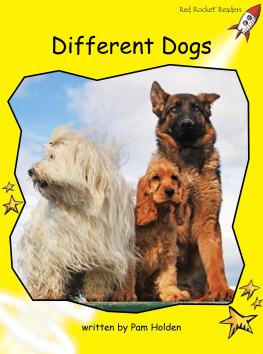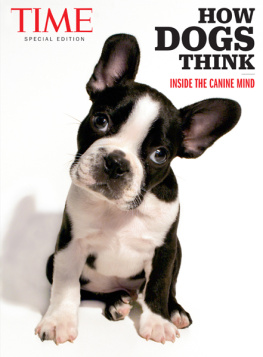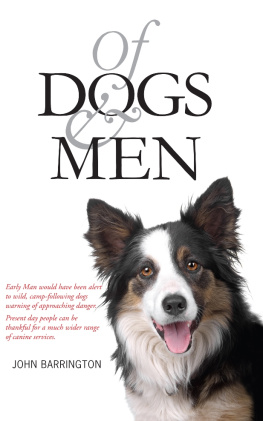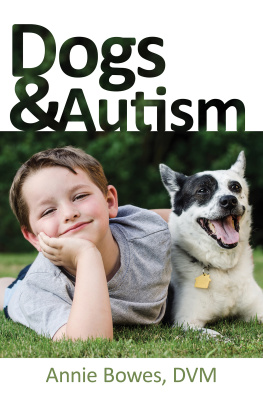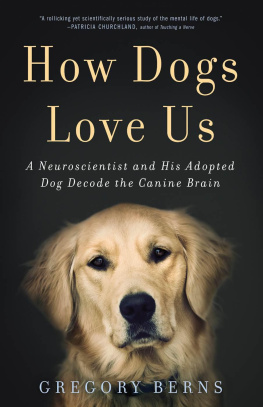Dogs
A NATURAL HISTORY
Jake Page
Preface by Stanley Coren
Photographs by Susanne Page
Illustrations by Jake Page

For Susanne

O LD N ELL (R.I.P.) AND C URRY (AGE TWELVE WEEKS)
W here do dogs come from? How did they form their association with humans? Can dogs really think? All of these questions have been asked millions of times over eons of time. There have been many attempts to answer them. One which I heard when I was younger came from a preacher whose ministry was a small rural church in West Virginia.
The story goes that when Adam and Eve had defied God by eating the apple from the forbidden tree, God drove them from the Garden of Eden. He placed an angel at the gate to bar their return to Paradise and he placed a pack of beasts there as well, to serve as guards which would enforce the ban. These beasts were great wolf-like animals with strong jaws and the ability to run very fast. They already had knowledge of humans since they had observed and interacted with them when all creatures lived together peacefully in the garden. However, there was dissention in the pack when they were given their new task. Some, who had been resentful of the special treatment that humans received from God, were pleased at their new job. They would gladly hurt any person because their jealousy had made them vengeful. Others had grown fond of the humans, feeling that there was still a spark of the divine in them. These worried about the safety of such fragile beings in the wild and dangerous world outside of Paradise. It was this second group who decided that they would go with Adam and Eve, to keep them company, to guard their safety, and to work with them to help them prosper.
When God looked down and saw that some of his pack of guardians had abandoned their post to travel with the humans he became angry.
Why do you not perform the task I asked of you? he roared.
The leader of this group, an animal named Keleb, spoke up. My Lord, if you had wanted these people to die you would have slain them in the garden. Instead you drove them out and charged us with the task of keeping them from ever returning. We will try to keep them alive as seems to be your will, and we will also keep them from trying to come back. We will do this working with them, by being their work mates and soul companions. If they feel that they can survive and prosper on their own, then perhaps they can try to build their own version of a Garden of Eden. Knowing that this can be done will keep them from attacking the gates of Paradise. Knowing the amount of labor that is required will also teach them the value of what they have lost by disobeying you.
God smiled at Kelebs words and said, This is a wise and noble thing that you are doing. As a reward I will put in the hearts and minds of humans a special place that can be filled with love and affection for your kind and the generations that follow you.
It is said that the animals who stayed to guard the gates were wolves and those who accompanied man into the wilderness became dogs. Dogs still work with and guard humans because it is a contract made with God. Humans, in turn, love dogs, because without a love of dogs there would be an empty place in their hearts and minds.
In this book, you will find a very different history of the origin of dogs. Jake Page does paint a beginning that starts with a wide variety of wild canines, and in a way he finds that there were some who remained wolves and some who chose to become dogs. There are, however, no angels in his treatment, but rather the action of evolution, natural selection, DNA, and human manipulation. This is not, however, a cold scientific history, but rather a transformation of one animal species into another that is helped along by humans, and is ultimately a benefit for both species.
Once he has told you how dogs came to be, he goes on to tell you how dogs perceive the world around them, how they think and solve problems, and how they communicate with people and other dogs. In the process you will learn that while dogs, as a species, have been shaped by evolution and the intervention of people, each individual dog is also shaped by its own history, which includes its history of interactions with humans. Along the way you will get a very practical glimpse of how such things come about when Jake Page describes the lives, histories and behaviors of his own dogsa half-dozen animals who fill those empty spaces in his heart and mind.
Stanley Coren

J UNO
M uch of what I have found myself doing for the past three-plus decades is the fault of my wife Susanne. It is she who introduced me to the American Southwest and actual American Indians in the form of the Hopis and Navajos. She also introduced me to a prothonatory warbler in a bush on the C & O Canal outside of Washington, D.C., leading to a continuing interest in birds which are, happily, always an important part of wherever I go. It was Susanne who saw to it that we kept a Polish hen and her chick in our bathroom for a long period, created four (count em) koi ponds at a house that sat close to the desert, and until recently had a bearded dragon living on the dining room table. Also, if it were not for Susanne, I doubt that my household would include six dogs.
Since they will make appearances in the course of this book, both in the text and in Susannes photographs, I introduce them herewith, in order of seniority:
Amelia, a female. Rescued from the pound in Espanola, New Mexico, she has huge, rounded, erect ears that begged for the name Amelia Earhart. A large black dog with a tendency to the beaminess of a Labrador retriever, she apparently (and improbably) has some fairly recent Corgi blood, explaining the size and shape of her ears. How a Lab-sized dog and a diminutive Corgi could have pulled off such a feat lies beyond my imagination. Low-slung on legs that are disproportionately short for her size (more Corgi?), she is the canine equivalent of a low-rider, which is appropriate enough, what with Espanola being a world-class low-rider capital.
Amelia, now some thirteen years old, has a white face and arthritis. She is extremely good-natured, and patient with kids who happily trample her. Amelia occasionally challenges the youngest dog, a male, to play with her, which sadly he seems puzzled by at best. And every now and then she exercises a minimal kind of dominance over the young male.
Curry, a male. The name is short for Coeur de Lion, or lion-hearted, a prospective name that seemed necessary. A Rez dog from a Navajo camp, he was one of three pups born to a Navajo sheep dog who disappeared, abandoning them to live in the sheep pen. Curry and his two siblings were used as toys by the Navajo childrenpulled, thrown, and generally abused until they were big enough to run away. We fetched Curry from an underground den and he spent his first month in our house under the bed.
For the next eight years he would not let anyone but us touch him. Then a very young granddaughter, over a period of about an hour, got him completely over these fears. He is extremely elegant looking, a slender, long-legged, and long-necked dog with a hint of greyhound, and Doberman coloring. He sits erect, head high, and looks a bit like the Egyptian dog-god Anubis.


